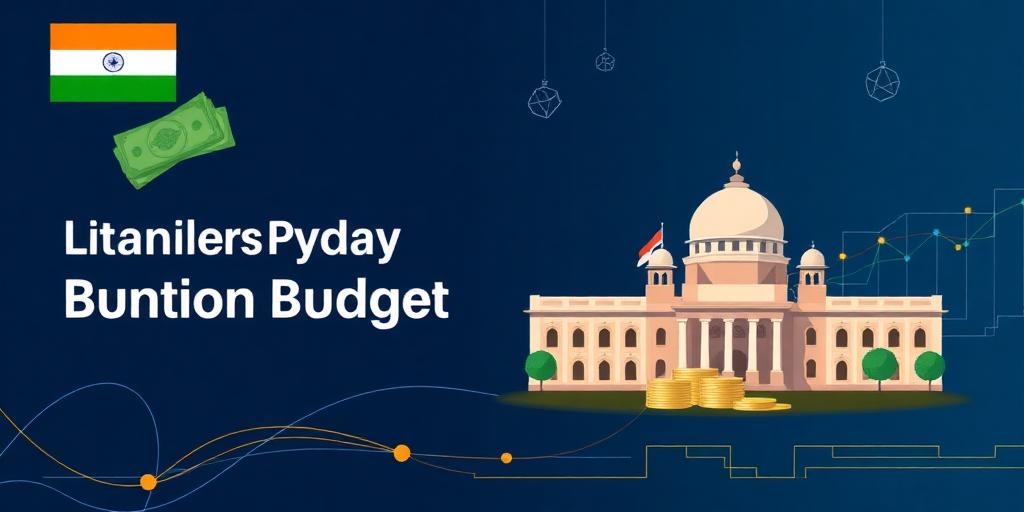Understanding India's Union Budget: An Authoritative and Simple Guide
Each year, the presentation of India's Union Budget is a pivotal moment, shaping the nation's economic trajectory and directly influencing the lives of its citizens. Far more than a mere accounting exercise, the Union Budget is a comprehensive financial blueprint that reflects the government's priorities, policy directions, and economic vision for the upcoming fiscal year. This authoritative guide aims to demystify this critical document, offering a clear and concise overview for a deeper understanding of how India's budget works and its profound impact.
What is the Union Budget?
At its core, India's Union Budget is the annual financial statement of the Government of India. Mandated by Article 112 of the Constitution, it details the government's estimated receipts and expenditures for the upcoming fiscal year, which runs from April 1st to March 31st. It outlines revenue generation plans (through taxes and other sources) and expenditure allocations across various sectors, ministries, and schemes, essentially laying out the financial plan for national development.
Key Components of the Indian Budget
To truly grasp the Union Budget, it is essential to understand its primary components:
- Revenue Budget: This deals with the government's current receipts and current expenditures.
- Revenue Receipts: These are non-redeemable receipts, primarily comprising tax revenues (like Income Tax, Corporate Tax, GST, Customs, Excise Duties) and non-tax revenues (such as interest receipts, dividends from PSUs, and fees for government services).
- Revenue Expenditure: This covers the expenses incurred for the normal functioning of government departments and various services. Examples include salaries, pensions, interest payments on government debt, and subsidies. These expenditures do not create assets.
- Capital Budget: This focuses on the government's capital receipts and capital expenditures.
- Capital Receipts: These are receipts that either create a liability or reduce financial assets. Examples include market borrowings, loans from the public, foreign governments, and the Reserve Bank of India, as well as recovery of loans and disinvestment proceeds.
- Capital Expenditure: These are expenses incurred for creating physical or financial assets, or reducing financial liabilities. This includes investments in infrastructure (roads, bridges), equipment, land acquisition, and loans to state governments or public sector undertakings. Such investments are crucial for long-term economic growth.
The Budget Allocation Process India Follows
The creation of the Union Budget is a multi-stage process involving extensive planning and consultation:
- Preparation: Beginning months in advance (around September-October), various ministries and departments submit their expenditure estimates and revenue requirements to the Ministry of Finance. Extensive consultations are held with stakeholders from different sectors.
- Pre-Budget Scrutiny: The Ministry of Finance scrutinizes these proposals, making adjustments based on economic forecasts, policy objectives, and available resources.
- Finalization: The Finance Minister, in consultation with the Prime Minister, finalizes the budget proposals. Strict confidentiality is maintained throughout this phase.
- Presentation: The Finance Minister presents the budget in Parliament, typically on February 1st. This speech details the government's financial performance, economic survey highlights, and the specific budgetary proposals for the coming year.
- Discussion and Voting: Following the presentation, there is a general discussion on the budget. Various demands for grants from individual ministries are then debated and voted upon by the Lok Sabha.
- Enactment: The budget becomes law after both the Finance Bill and the Appropriation Bill are passed by Parliament and receive presidential assent. This enables the government to collect taxes and spend money as per the budget.
Impact of the Union Budget
The Union Budget has far-reaching consequences across various facets of the economy and society. It influences:
- Economic Growth: Through capital expenditure on infrastructure and investments, the budget can stimulate demand and foster economic expansion.
- Inflation: Tax policies and government spending can impact price levels.
- Employment: Sectoral allocations and infrastructure projects can create job opportunities.
- Social Welfare: Allocations for health, education, and poverty alleviation schemes directly impact the well-being of the population.
- Taxation: Changes in direct (income, corporate tax) and indirect (GST) taxes directly affect disposable income and business costs.
- Market Sentiment: Budgetary announcements often trigger reactions in financial markets, affecting investor confidence.
Understanding budget documents is therefore crucial for businesses, economists, and citizens alike to anticipate policy changes and their potential ramifications.
Conclusion
The Union Budget is a dynamic instrument of fiscal policy, reflecting the government's commitment to economic stability, growth, and social equity. By providing a clear framework for resource allocation and revenue generation, it serves as a critical tool for national development. A comprehensive understanding of its structure, components, and the budget allocation process India follows empowers every stakeholder to engage more effectively with national economic discourse and comprehend the forces shaping the country's future.









